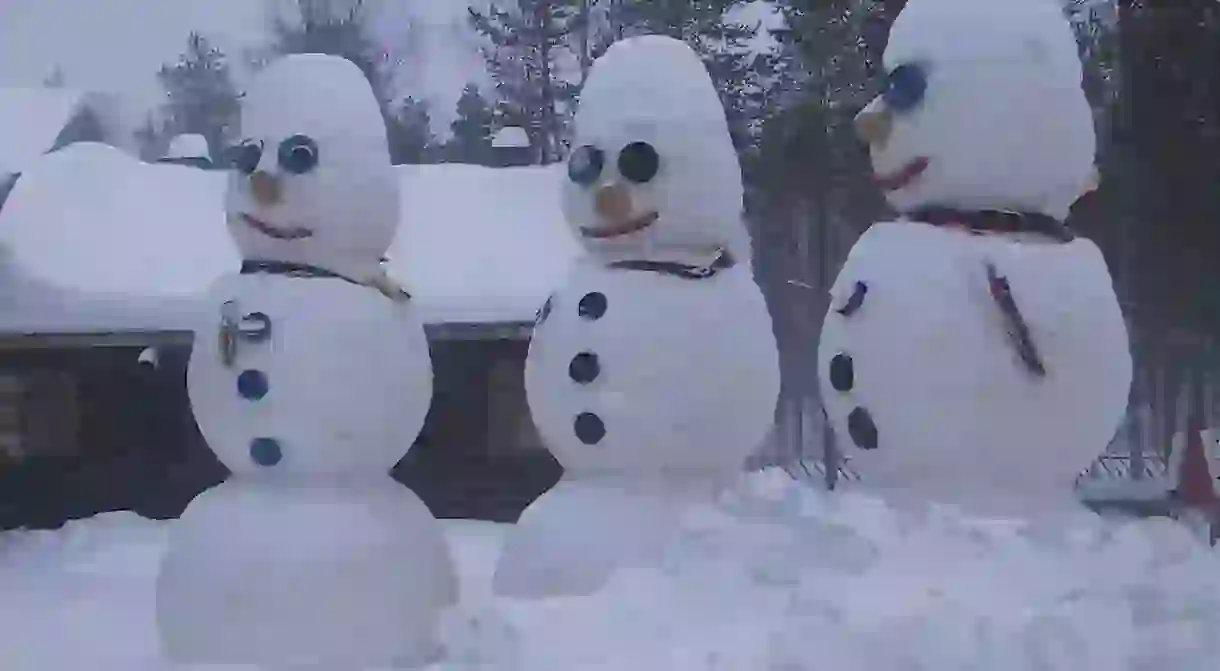How Rovaniemi Became The Official Town Of Santa Claus

The Santa Claus Village in Rovaniemi, just north of the Arctic Circle in Finland, is one of the world’s most popular travel destinations for families, even in winter when the temperatures are below freezing. For small children, visiting Santa and his reindeer is a magical experience, and it is a highly sought-after spot for adults to spend their Christmas holiday or honeymoon. The village is now one of the most visited sites in Finland, receiving over 300,000 visitors each year, including a growing number from China where Christmas has been banned. This is the story of how this tiny logging town in Lapland turned into Santa’s official hometown.
Ancient Lappish origins
For hundreds of years, Lapland has shared folklore of early Santa-like figures. Inspired initially by the Norse god Odin, a figure known as the Yule Goat (which is what Santa is still called in Finland to this day) was said to deliver gifts on Midwinter’s night. Small creatures known as tonttu would also later became Santa’s elves.

In the 16th century, these myths were combined with the story of St. Nicholas to become the Santa figure we recognise today. In 1866, an illustration in Harper’s Weekly magazine revealed that Santa lived at the North Pole, providing an association with cold and snowy locations.

But Finns knew that Lapland was a far more suitable home for the beloved Christmas figure. It was cold but still inhabitable and full of wild reindeer, who couldn’t possibly graze at the North Pole. In 1927, Finnish radio broadcaster Marcus Rautio announced to the world that Santa’s workshop had been discovered in Korvatunturi fell, which is still used in the official backstory of the Santa Claus Village.

A famous visitor
The city of Rovaniemi was almost completely destroyed during World War II (eerily, remains of Nazi structures can still be seen close to the Santa Claus Village) and reconstruction began immediately, thanks largely to aid from UNICEF.

Former First Lady Eleanor Roosevelt, widow of the late US president Theodore Roosevelt, was greatly involved with UNICEF and made a visit to Rovaniemi in 1950 to see the reconstruction. This would prove to be a turning point for the town’s history when an Arctic Circle cabin was built to host Mrs. Roosevelt’s welcoming ceremony. Since the visit was so last-minute and Rovaniemi was still in reconstruction mode, the cabin had to be designed in a single night and built in only a week.

Santa saves Rovaniemi
Eleanor Roosevelt’s visit was important not only to the spirit of the town, but also in providing inspiration for how to revitalise it. Despite its hasty construction, the Arctic Cabin quickly became a tourist attraction (it is still a prominent part of the Santa Claus Village). In 1957, the New York Times’ travel section began promoting Lapland as ‘Europe’s northern wilderness’, since it was unlike anything that Americans had seen before. It was decided that tourism was the key to bringing revenue back into Rovaniemi.
Fittingly, around this time television and cinema were becoming more prevalent. Every Christmastime, the children of the world were bombarded with cartoons, films, and commercials full of images of Santa Claus, increasing their desire to visit him. The growing popularity and decreased price of air travel made trips to Rovaniemi even easier, despite its remote northerly location.

The area around the cabin had additional structures built to cope with these increasing numbers of visitors. In 1984, the governor of Lapland officially declared the province as ‘Santa Claus Land’. A year later, the Santa Claus Village was opened as an entire holiday complex where visitors could meet Santa, ride in a reindeer sleigh and send a letter with an Arctic Circle postmark from the post office.

Eleanor Roosevelt hasn’t been the only famous visitor to Rovaniemi. Other world leaders who have made the trip include US president Lyndon B. Johnson, Crown Prince Carl Gustav of Sweden, the Shan of Iran and even Leonid Brezhnev, the Secretary General of the Soviet Communist Party.
Santa’s presence in Rovaniemi has not only given people from all over the world a happy childhood memory but also brought new life to a devastated city.














